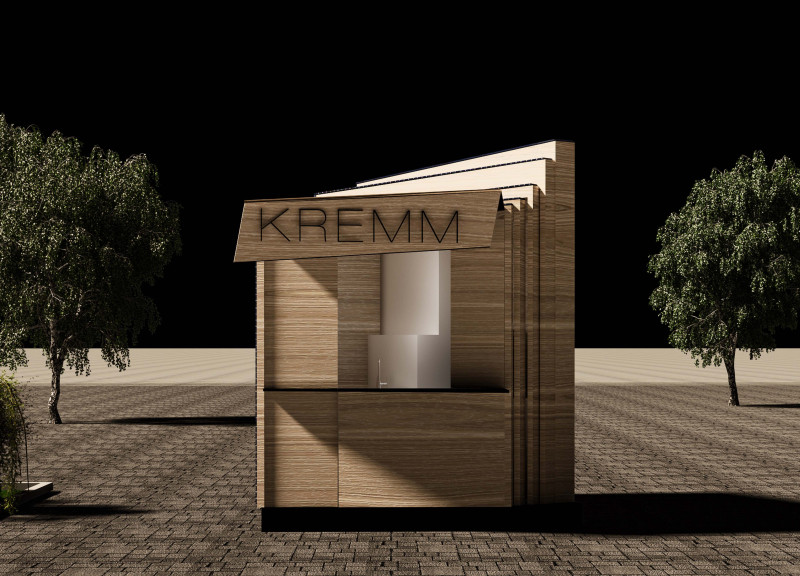5 key facts about this project
The kiosk's layout integrates accessibility for users while maintaining an efficient operational flow. The incorporation of angular forms echoes natural survival strategies observed in certain crustaceans, serving both aesthetic and functional purposes. The design prioritizes durability and ease of maintenance, ensuring that it remains operational across various seasons and user demands.
Sustainable Features and Material Choices
The SOPO project stands out due to its emphasis on environmental sustainability. The use of solar panels integrated into the kiosk's façade supports energy efficiency, underscoring the project’s commitment to minimizing environmental impact. The choice of lightweight materials, such as aluminum panels and plywood, contributes to the structure's longevity and ease of relocation. Additionally, the incorporation of a rainwater management system demonstrates a proactive approach to environmental considerations.
The use of materials like Forex panels for signage and steel for structural elements enhances both functionality and visual appeal. The design intelligently combines these materials to create a cohesive aesthetic while ensuring robustness.
Functional Design and User Interaction
The functional design of KREMM facilitates a seamless experience for users. The kiosk features multiple access points, ensuring efficient movement between staff and customers, which enhances service delivery. The modular design allows for adaptability, permitting changes in layout based on seasonal demands or site-specific conditions. The integration of practical, energy-efficient lighting enhances visibility, making the kiosk inviting during evening hours.
By focusing on these key functional aspects, the SOPO project offers a prototype for urban kiosks that harmonize with their environment while serving community needs. The innovative design processes employed in the project set it apart in a landscape filled with conventional kiosks.
For a more detailed understanding of the SOPO project and its architectural plans, sections, and designs, explore the complete project presentation. Gaining deeper insights into the architectural ideas behind KREMM can inform future developments in sustainable urban architecture.

























